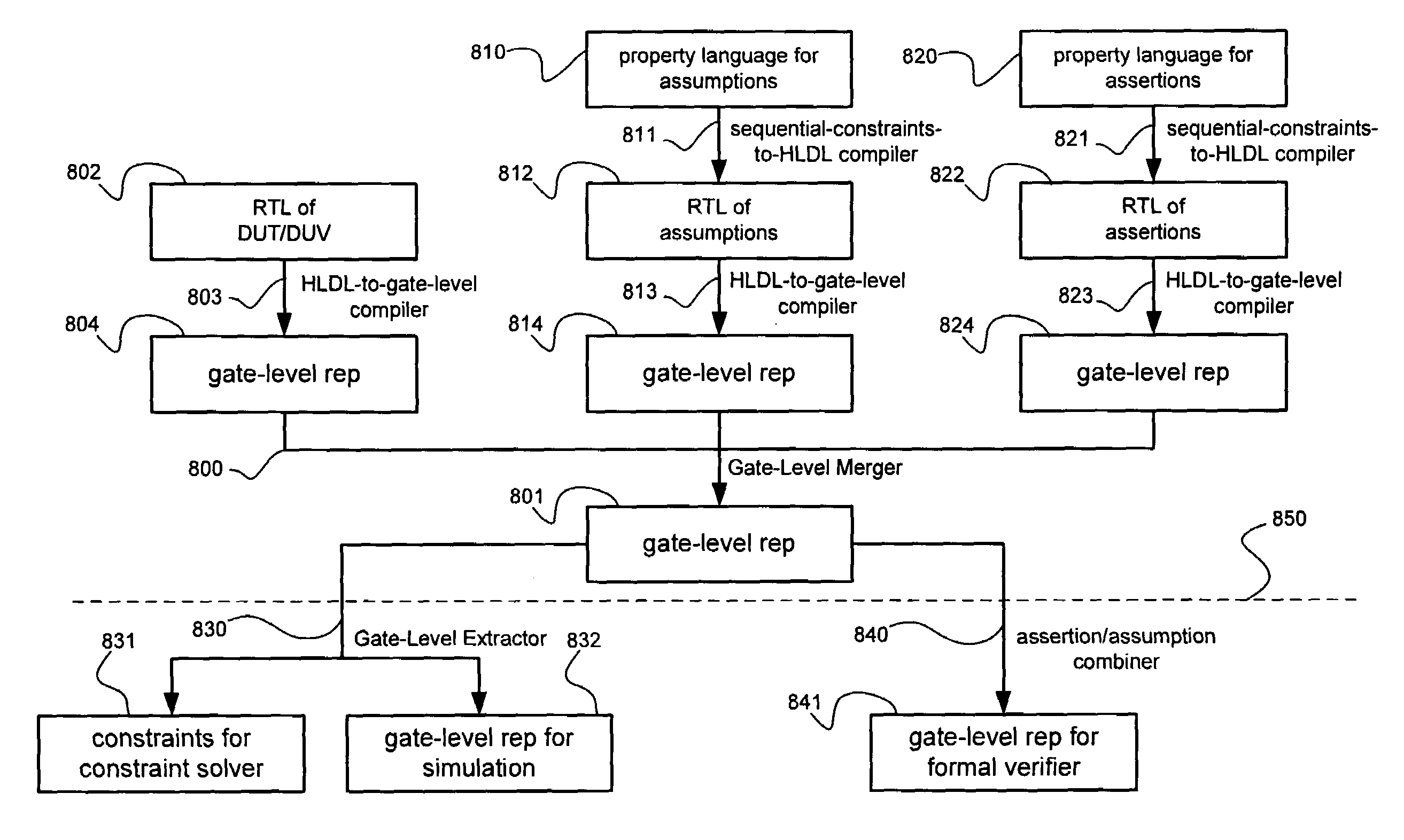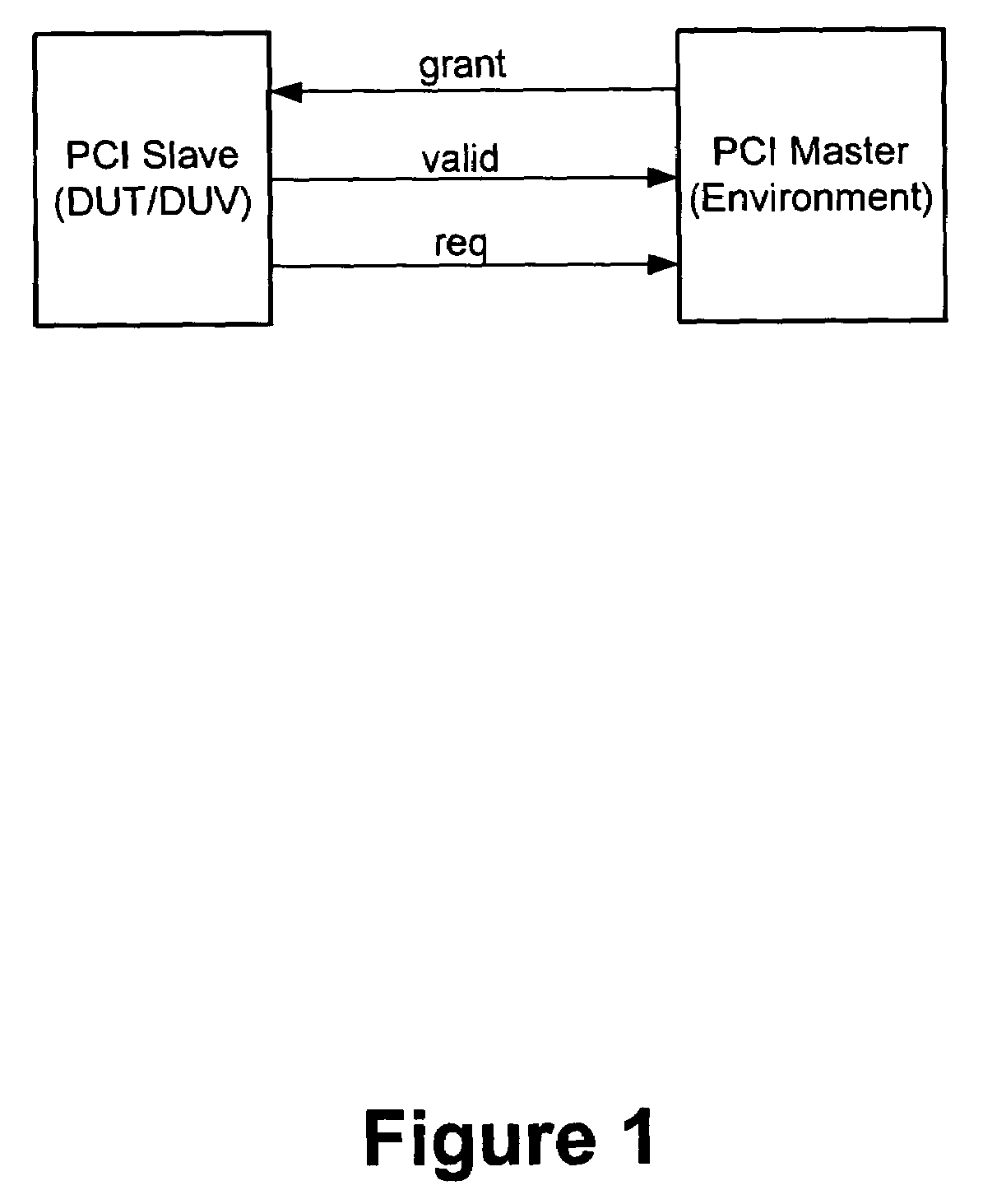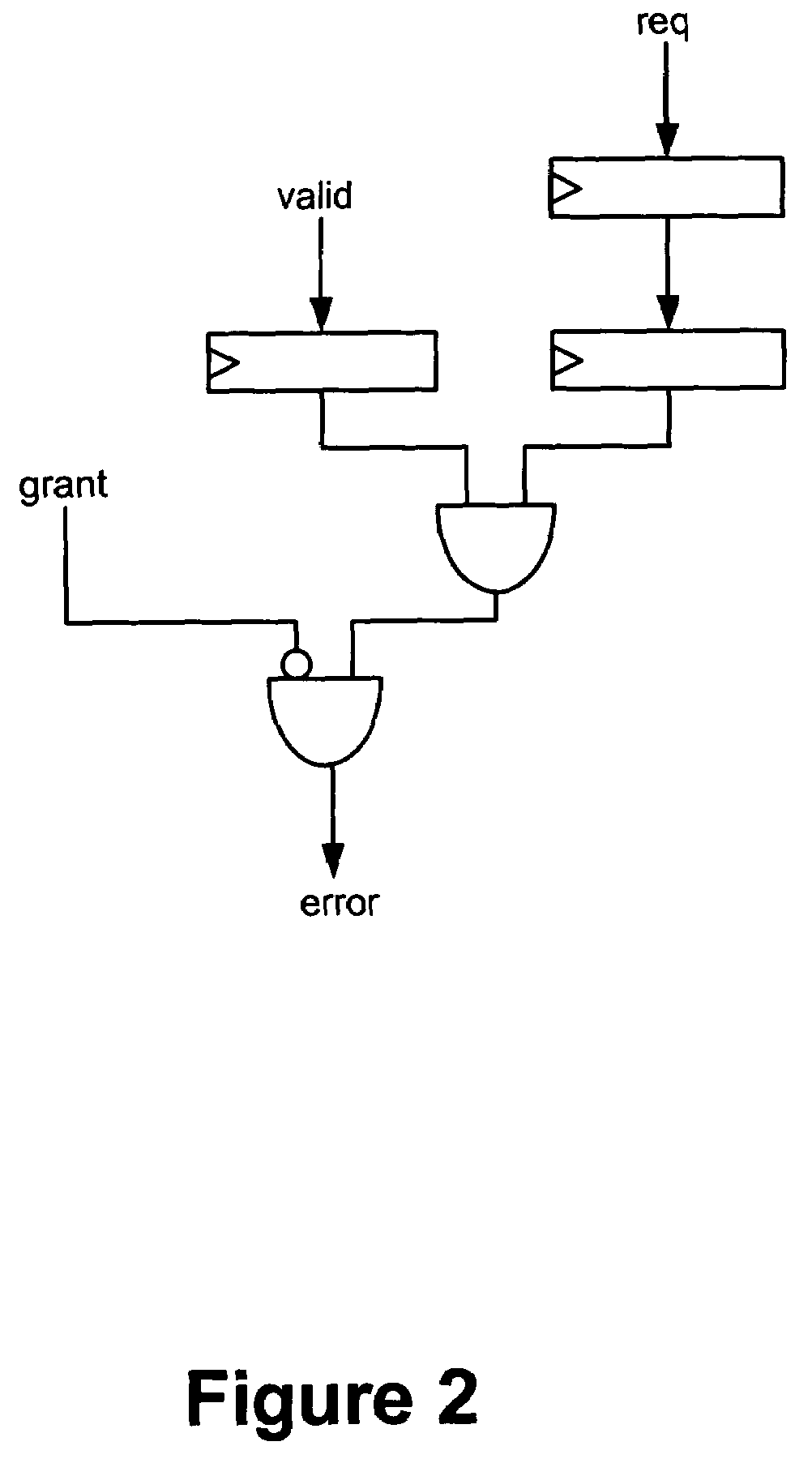Method and apparatus for solving sequential constraints
a technology of sequential constraints and methods, applied in the field of solving sets of constraints, can solve the problem that constraints based on combinatorial assumptions cannot specify a time-ordered behavior for an environmen
- Summary
- Abstract
- Description
- Claims
- Application Information
AI Technical Summary
Benefits of technology
Problems solved by technology
Method used
Image
Examples
Embodiment Construction
[0079]Reference will now be made in detail to preferred embodiments of the invention, examples of which are illustrated in the accompanying drawings. Wherever possible, the same reference numbers will be used throughout the drawings to refer to the same or like parts.
[0080]This specification contains pseudo-code to illustrate several embodiments of the invention and to explain its principles. The pseudo-code is loosely based upon the C and C++ programming languages. The C and C++ programming languages are described in such texts as “The C Programming Language”, by B. W. Kernighan and D. M. Ritchie, Prentice Hall, Inc., 1988, ISBN 0-13-110362-8 (paperback), 0-13-110370-9 (hardback) and “The C++ Programming Language,” by Bjarne Stroustrup, Addison-Wesley Pub. Co., 3rd edition, July 1997, ISBN 0-2018-8954-4, which are herein incorporated by reference.
Table of Contents to Detailed Description
[0081]1. Conversion of Sequential Constraints[0082]1.1 First Step[0083]1.2 Second Step[0084]1.2....
PUM
 Login to View More
Login to View More Abstract
Description
Claims
Application Information
 Login to View More
Login to View More - R&D
- Intellectual Property
- Life Sciences
- Materials
- Tech Scout
- Unparalleled Data Quality
- Higher Quality Content
- 60% Fewer Hallucinations
Browse by: Latest US Patents, China's latest patents, Technical Efficacy Thesaurus, Application Domain, Technology Topic, Popular Technical Reports.
© 2025 PatSnap. All rights reserved.Legal|Privacy policy|Modern Slavery Act Transparency Statement|Sitemap|About US| Contact US: help@patsnap.com



